The John Collins collection of "Particular Bindings"
Introduction
The examples, given below, are of the decoration on bindings (mostly custom bindings), of binder’s names, and of provenance, such as inscriptions or bookplates.
John Collins formed his
collection as part of his work travelling in the UK to buy books for Maggs. Maggs
wanted to purchase potential or actual high value books, which would be
subsequently sold by them. However, the booksellers that Collins spoke to also
had books in their possession, that, at the time, had no commercial value and
could not be re-sold. Collins offered to buy these ‘without value’ books with
binding names and/ or other interest, and so his collection accumulated. After many years collecting books in this
way, he decided to sell it. He created a detailed entry for each book to
accompany its sale, a task which took him about a year and a half. The significance
of the collection lies not only in the intrinsic value of each binding, but
also in these detailed descriptions, representing his accumulated knowledge. To
do this, he drew upon all his experience working in the field for many years.
“The present catalogue
illustrates the development of signing [bindings] from the engraved label
onwards. It certainly includes some rather bad bindings, many produced as the
industrialisation of binding speeded up, but almost all are of documentary
interest. The great majority are what one would call custom bindings, but I
have included a small sample of publisher’s bindings, partly or completeness,
and partly because the boundary between a single and a multiple commission is
more difficult to draw than one might suppose.”
The first challenge was to make
machine readable, each detailed description in the Collins printed catalogue.
With the use of a Brother printer scanner (LC223 series), and its accompanying
software Utilities, called ControlCenter4, it proved possible to make an OCR
scan of each entry in the Collins printed catalogue of 2006. The bulk of the
text of each page was recognised by this software, with manual correction of
the OCR being made to each entry. This searchable text was added to each online
entry in the BL Database of Bookbindings, so that users of the database can
carry out free text searches. Keying in the name Collins and a number into the database
search box will normally call up the full descriptive entry, plus any scans
made.
Elements captured for each record
Collins provided the details for
each entry, and the OCR text was proofread prior to uploading. Collins’s work
has not been amended, and they are entered in a Notes field within the
database. Details of author, title, imprint were entered. Scans made for each
entry created for the online database include: scans of the binding (normally
both covers and spine), of the binder's ticket, of the binder’s stamp/ pallet,
or other forms of naming, for example inscription, or names printed as part of
a colophon, or on a title page verso; also, scans have been made of each owner inscriptions,
etc., or of owner bookplates, or prize labels. Maps have also been scanned on
occasion.
In the sale catalogue of 2006, entries were organised by geographical area e.g. England Provincial, entries 1-271; Ireland 272-307; London 308-743; Mauchline ware 744-753; Scotland 754-817; Wales, 858-887. The majority are of a single entry for a single book, with a minority being multi volume works. In the sale catalogue of 2006, the descriptive part of each entry comes first, followed by supplementary note, in smaller type, which frequently details the existence of other copies, or details of the binder; or indeed anything else which was considered relevant. The typographical distinction for notes has been sacrificed within the online entry, but all of Collins text has been made available.
The cumulative effect is a wealth
of information, which reflects upon Collins’s great knowledge. Many groupings
suggest themselves as a result of the work. These underpin the scope of the
collection. At the heart of the collection are the several hundred names of
binders, which can be searched for, with images of tickets or stamps being
available for viewing. Images of binder’s stamps/ pallets have been excluded
here, but can be found within each database entry.
Collins 161 is a copy of Bond. The plain dealer…, 1730. It has a splendid advertisement of James Marshall, working at the Bible and Sun in Stockton. He sold anything/ everything, and, almost as an afterthought at the end, states: … ‘at the same Place Books are bound after the best manner.’
English Provincial binders’
tickets
Collins 18, Oxford 1801, has an oval ink stamp, with a bead border of T. Barratt, of Oxford.
Collins 41, London 1894, has an attractive looking ticket of Bon Marche, of Liverpool, shaped as an open book, with their monogram on the right hand page.
Collins 90 London: Bentley, 1894, has the ticket of Diboll & Son.
Collins 57 London: HMSO, 1903, has the ticket of C. A. Campling, a successor
to Diboll.
Collins 110 has an oval-shaped
ticket of [Thomas] Gibbons, of Bath.
Collins 121 has an octagonal
ticket of Gregory & Taylor of Liverpool, the book published in London for
John Reeves.
Collins 128
Collins 129
There are a couple of tickets of A. Hart, bookbinder, Braintree, with Collins 128 being an oval stamp, with double rule borders, Tauchnitz, 1906; and Collins 129 also an oval, with gilt letters on an (originally) dark red background, Cassell 1883.
Collins 144
Shield shaped tickets were less
common. This example, London: Vernor, 1809, on Collins 144, has the details of
William Hunt, of Ipswich, printed on a deep green dyed paper.
On Collins 196, the ticket of
Edward Paul, of Southampton, helpfully directs would be patrons to 24 French
Street, “(Near the Theatre)”, London, [published] for the Author, 1825.
Circular shaped tickets are also
less common. Collins 212 has the ticket of J. Robinson, of Whitehaven, with a
beaded border; London: Harper, 1803.
Collins 280 – London &
Dublin, 1832 – is also unusual, having two tickets of P. T. Doyle, bokseller and binder, with
different addresses, next to each other.
Collins 278 – Londonderry, 1894.
According to an advertisement placed in the
Londonderry Sentinel, James Colhoun was likely to have been working at
the office of the Londonderry Sentinel [newspaper], with bookbinding carried
out alongside his work as a Printer, Publisher, and Lithographer. (Londonderry
Sentinel, 22.12.1894, p. 5.)
In Collins 281, the ticket of S.
Eccles, of Coleraine was a binder, and also a Bookseller, Stationer
and Musical Instrument Maker.
For Collins 287, ondon, 1864, the Guy Brothers of Cork put a ‘puff’ into this label: ‘Hon[oura]ble Mention [at the International Exhibition] Dublin 1865’.
In Collins 305, Oxford 1870, Ward Bros. inserted the 'puff' in their diamond shaped ticket: ‘Bookbinders to the Prince of Wales’.
Scotland
Collins 768 has the ticket: ‘Bound by Blackie & Son’, printed on the left hand page of an open book, with their monogram on the right hand page. Notes on the New Testament [1884-1885].
Collins 778 is a copy of Scott’s Halidon Hill, Constable, 1822, with the ticket of James Condie of Paisley.
Collins 779 is a copy of Walpole,
Noble Authors, London 1792, with the (lightly embellished) ticket of J. &
J. Edmond & Spark, of 54 Queen Street, Aberdeen.
Less common is the stamped 'ticket' of A. Milne, of Forres, on a copy of Carr, Caledonian Sketches, Matthew
& Leigh, 1809 – Collins 801.
Wales
The ticket of Barnikel, Bookbinder, Pembroke is in a copy of Collins 864, Norris, Etchings of Tenby, published in London by Booth, 1812. [Interesting to speculate how many copies of the work were bound in London, if at all.]
For Collins, 865, the binders
Catherall & Nixon presumably took sheets of Blackwood’s Edinburgh Magazine,
of 1863, to bind and sell locally in Bangor.
Collins 868 has the ticket of D.
Davies of Cowbridge, Merthyr: B. Morgan, 1831, in a copy of Brooks, Afalau aur
i bobl ieuaine.
In Collins 875, Hughes of
Pontypool also advertises himself as a Bookseller; Wrexham, Hughes 1872.
London binders
Collins 361 the ticket has a
charming pun of Matthew, Bell, Colley & Co, with a collie dog and a bell prominent, Constable,
1892.
The tickets of Collins 409, Calder, published by Colburn, 1851 has lettering in four different fonts.
Collins 415, of Cloutt, Bookbinder, of 30 Duke St., Bloomsbury, published by White in 1801 – this also uses four different fonts.
Collins 418 is a Bible published
by Eyre & Spottiswoode, for the British and Foreign Bible Society; we see a
rectangular ticket of G. Collier & Son, with the details printed within
an oval frame.
Charles Courtier had their name
blocked within the cover decoration for six books in the Collins collection,
with number 427 being a Collection of Hymns by Evan Griffiths, published by him,
Swansea, 1859.
In this Bible Commentary
published ca. 1845 by The Religious Tract Society (Collins 439), we have the
ticket of Davison (Packer, p. 43).
In the copy (Collins 447) of Fraine’s
Lectures…, Cambridge ca. 1876, Dow & Lester describe themselves as
‘Publishers’ Binders’.
Shield-shape tickets printed
within a square or rectangle are not common, but Fisher & Sons had this shield
shape of ticket inserted into a copy (Collins 470) of Barnes, on 2nd
epistle of St. Paul, Routledge, 1859.
H. T. Fisher & Co. used a
rather charming 'puff' on their ticket (Collins 471). ‘Artistic, Old Style &
General Bookbinders’, in a copy of Eliza Cook, Poems, Warne, ca.1874.
Presumably, they also bound books for the Fisher's Library.
Collins 486. The ticket is in a
copy of The leisure Hour, 1855. P. Hance Bookseller and Stationer was working
in Gloucester Place, King’s Road, Chelsea.
Collins 531, is a copy of Renouard,
Catalogue… Paris, 1819, Collins’s notes read: ‘The binder's circular leather
label reads 'Bound by CL [Charles Lewis, an interlaced monogram] Duke St[reet]1,
St. James's London', within a quadrilobe border. He was so confident that he
could assume his initials would be recognised, an unusual affectation.’
An octagonal ticket of J. Low
(Collins 537) has the word ‘Bookseller’ in bold italics above the word
‘Binder’, in a copy of Parvilliers, Devotions, 1795.
Janet Mahomet (Collins 542) bound this testimonial volume for C. M. Croudace, on her retirement from Queen’s College London.
Collins 560. This ticket is in a
copy of Fuller-Maitland, Sermons on some special occasions in Kelly Church,
1887-1897…
Collins 565. This ticket is in a
copy of the Journal of the British Astronomical Association, 2 vols, 1891-1893.
One wonders what other activities were represented by the “&c”.

Collins 591. The oval ticket is in a copy of The Remembrance, [1832]. The ticket is notable for the statement of ‘embossed’ by Remnant & Edmonds.
Collins 594 is in a copy of Epistles of the ChristianYear, [1865].
In Collins 611, J. Rowbotham advertised himself as ‘Caoutchouc Bookbinder’, on his ticket attached to a copy of the Oratorio ‘Jeptha’, Novello, ca. 1851. Advertisements for Caoutchouc appeared in newspapers from the 1830s, examples being ‘Hancock’s Patent Caoutchouc Bookbinding’, Nottingham Review, 8.12.1837, p. 2; and ‘Bookbinding with the Patent Caoutchouc Back’, ad. By J. Dodgson & Co. New Court Gazette, 18.1.1840, p. 16.
The ticket for Collins 614, shows Rowbotham advertising himself as a ‘India Rubber Bookbinder’, in a copy of Mendelsohn’s Oratorio, Novello, 1854.
Collins 643. [Smith & Son]
There are nine books in the Collins collection with tickets of J. Smith or
Smith & Son, of Albion Buildings, Bartholomew Close. Collins 643 is printed
on the front free endpaper, in a Book of Comon Prayer, OUP, 1835.
Collins 646 has a ticket with a
double rule frame on its borders, in
Mersden Pastoral Conversations, SPCK, 1841 (Packer p. 138).
Trickett & Son Binders
(Collins 670), is undecorated, apart from the single rule to its borders. This
is in a copy of Trower, …Expositions of the Epistles, SPCK, 1860.
Collins 671 has the ticket of
‘Jas Truscott & Son, Ltd Contractors for Bookbinding to H. M. Government’,
in Public General Acts, King’s Printer, 1910.
Collins 704 has the diamond
shaped ticket of Benjamin West, who, according to Packer was: ‘Brother in law
to James Barritt, who was noted for his work as a die cutter for embossed
bindings’ (Packer p. 160).
Collins 370. There is a pasted-in list of sponsors and officials of the Naval and Military Bible Society, and, at the bottom of the list is: ‘John Bird. Bookbinder to the Society, 52 Hatton Garden’. This is in a New Testament, stereotype edition, Eyre & Strahan, 1821. The lettering on the covers is tooled sideways, within the lighter central panels.
Engine turned embossed bindings
There is a group of some eighteen engine turned embossed bindings in the Collins collection, of which four are shown here. When making scans on default settings, the result is rather dark, so scans were colour corrected, to show the embossed patterns more clearly.
Modern examples of engine turning
Engine turning – brocade Rose
engine turning
Collins 316 is a Bible, published by OUP in 1844.
Collins 317 is a French Bible, Paris, 1877, probably bound for the British and Foreign Bible Society.
Collins 329: Mangnall, Historical questions, Tegg, 1841.
Collins 331: Ready Reckoner, Nelson, 1860.
Watkins bindings for The British and Foreign Society
Collins 695 is an Italian Bible,
published by J. S. Hughes in 1821, bound in speckled sheep. The ticket of L. M. Watkins refers to Miss
Louisa Watkins.
Collins 676 a English Bible,
published by W. Parker for BFBS, 1841. On the centre of each cover, the
lettering of the BFBS is embossed. The ticket of L. M. Watkins may refer to
Miss Lorinia M. Watkins, whom Packer records (p. 158) as working/ managing the
bindery by 1841.
The Society for Promoting
Christian Knowledge
Collins 630, is a Holy Bible, in a
full calf binding, with SPCK on the central panels, possibly bound by John
Seear; published in Cambridge, stereotype edition: Smith, 1814.
Collins 580 Bible
Apocrypha SPCK ca. 1814; a sheep binding, with ‘Society for Promoting Christian Knowledge’ is blocked
on each cover within an ornamental frame and with ‘Remnant’ stencilled on front
pastedown.
Collins 384 is a copy of Wilson, Thirty-three sermons,
London, 1823, bound by J. Bird (printed on front pastedown), in tree sheep, with the
SPCK lettering centrally stamped within a wreath on the upper cover.
Collins 620 is a copy of Ken, A manual of prayers, London, 1822; a copy bound in speckled calf, bound by A[lexander]. Russell, Feb. 1824, printed on front pastedown. This too has the SPCK lettering stamped in blind on the upper cover within a central oval.
John Bird bindings
There are some twenty books in the Collins collection,
bound by John Bird, of 52, Hatton Garden. This group, shown below, are all
half bound with marbled sides, and marbled enepapers, with spine lettering and
panels in gilt. All were published by Chiswick Press, between 1823 and 1825.
Collins 375 has a half calf binding on: Dodd, Thoughts in prison, 1823.
Collins 376 has a half morocco binding, on Franklin, Works, 1824.
Collins 378 has a half calf binding on Mason Self-knowledge, 1825
Collins 379 has a half sheep binding on Milton, Paradise regained, 1823.
Coat of arms
The Collins collection has some nineteen books with a
coat of arms blocked on covers, or printed and used as bookplates. Six examples
now follow.
Collins 250 has Winchester Cathedral arms, on a copy of the Service of Thanksgiving St. Swithin’s day, 15 July 1912. (The cathedral was saved from collapse by the work of diver William Walker.)
Collins 305 has the arms of the Methodist College,
Belfast – a prize binding, on Ruskin, Lectures on Art, Oxford, 1870.
Collins 473 has an upper cover coat of arms and
monogram of A. B. Ferguson, with his monogram on the spine, on a copy of Bazin,
Le Louvre, Grenoble, 1933.
Collins 536 has the arms of the Law Society of Britain,
Solicitors’ Remuneration Order, London, 1889.
Collins 575 shows the coat of arms of Fullands
Collegiate School, on a copy of Maunder, The Treasury of Knowledge,
Longmans, 1876.
Collins 798 displays the arms of the Edinburgh
Collegiate School, on a copy of Skobeleff and the Slavonic causes,
Longmans, 1883.
Collins 18 – the arms of Albert Ehrman, in a copy of
Hare, An essay on …scepticism, OUP, 1801.
Collins 93 – has the arms of John H C Evelyn, of
Wotton, 1876-1921, in a copy of Edgar, The heroes of England, Bickers,
1887.
Collins 138 – bears the bookplate arms of Wentworth Grenville
Bowyer, in a copy of Withering, …British plants…, Birmingham, 1812.
Publishers’ bindings
Publishers’ Bindings (trade/ edition bindings) form
only a minority of books in the Collins collection. A few examples follow.
On a copy of Tyax, Beautiful Birds, Houlston,
1854, there is an upper cover vignette by William Harry Rogers, with his
monogram ‘WHR’ at its base. Bound by Bone & Son.
Collins 526 is a copy in the series Moxon’s Miniature
Poets, of Wordsworth'. A selection from the works… of 1865, with this copy being
the de luxe publisher’s leather edition of full morocco, with blocking of the
design by John Leighton on both covers.
Collins 606 is a copy On the imitation of Christ, Parker, 1859, [an edition binding?] in brown morocco, with blind tooling on the covers, copying the style of a 15th century design, probably bound by Rivingtons.
Collins 664 has a John Leighton spine design on a copy of Murray, Zoological sketches, SPCK, 1859. An edition binding, slightly unusual by not being bound by one of the ‘big five’ London binderies (Bone, Burn, Edmonds & Remnant, Leighton Son & Hodge , Westley), but by Spencer & Son.
Collins 880 is slightly out of the ordinary. A copy of Roberts, Druidical remains…, published in Swansea, by Griffiths in 1842. H. Jones the binder is listed in Ramsden (p.99), and has an uncommon cloth grain of a hexagon pattern.

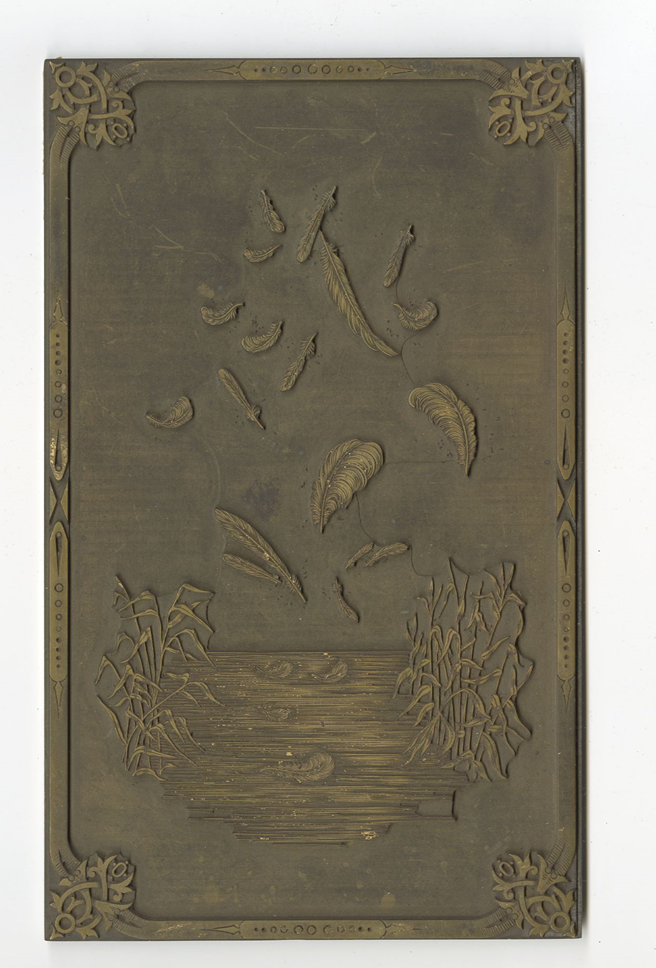

Collins 400 – Hume. Stray Feathers, was published in Calcutta in a twelve volume set, 1872-1899. The British Library has two copies. One copy is at shelfmark PP2041. Originally issued in parts with paper wrappers, these have been collected at the end of the bound volumes. The other copy is a former copy belonging to the India Office Library, shelfmark ST 370. This set is bound in half calf, with marble sides. What we see here (Collins 400) is the brass block for the upper cover (middle), with feathers floating down in to a pool, with reeds on eitherside. There is the brass block for blocking on the spines of the set 9on the right). There is also a case of millboard and green cloth, blocked in gold and in black for vol. 9 of the set on the left). These items were rescued by Collins from a waste paper basket.
Printers/ publisher devices
When making scans, it was of interest, to make
images of printer or of publisher devices/ monograms.
Collins 335 has the device of Samuel Bagster, who published this
English Bible in ca. 1860;
Collins 361 is that of Archibald Constable, 1892
Collins 494 is of the printer Taylor and Francis, in A list of
British birds, published by van Voorst, 1883.
Dust wrappers/ Dust Jackets
There are but a few dust wrappers/ dust jackets on books in this
collection. It is a matter largely of chance that dust wrappers survive through
time.
Collins 529 - Percy Thrower, In your greenhouse, published in 1963.
Collins 519 - Plastics in Industry, 1940.
Collins 349 – Husband for Victoria, 1958.
Collins 567 is notable for a multi coloured cover design by John Piper, on a copy of The BBC Television Centre [Shepherds Bush, 1960], with photographs by Hans Wild. Collins states in a note: ‘The design was especially designed by Piper, this is not an adaptation of a previous design in another medium’.
Decorated endpapers
Here are a few examples of decorated endpapers and
pastedowns.
Collins 333 has these ‘floral’ patterns on a copy of
Tennyson, Poetical works, Tauchniz edition of ca. 1890.
Collins 362 shows a sunrise over a landscape scene, by
Robert Anning Bell, who also provided the cover design, on a copy of Thompson, Underneath
the bough, John Lane, [1905].
Collins 511 has decorated endpapers and a binding by
Kalthoeber, on a copy of the Bible, Edinburgh: John Watson, 1716.
Curiosities
A display of three curiosities. Collins 332 has a
black calf binding with a central panel of snakeskin, on a copy of Sterne, A
sentimental journey, Routledge, 1886.
Collins 971 The
covers show coloured illustrations of dogs and dog food, glazed
pictorial boards, and a front cover with sticker 'Patented binding guaranteed
for 1 years. Patent #4,106,148', Neptune City, TFH publications, 1988. ‘The
patent was filed by Herbert R. Axelrod in 1976'
The provenance
of Collins 673 is interesting. The copy is of Smith, List of specimens of
British animals… London [BM Trustees], 1851, The book is inscribed on the
title page: ‘Mr. G. R. Gray’s Room’ [i.e. George Robert Gray], together with
the BM crown stamp, and also a stamp of the Department of Entomology. The
interest for Collins was the attribution of the binding to Charles Tuckett,
binder at the British Museum during this period. So, the book returned to the
British Library many years after it was sold.
Collins 897 is, according to Collin’s notes, ‘a metal
binding of tinplate, front cover embossed with coloured view of MMA [Museum of
Modern Art] with yellow taxi, by Anders Osterlin, after a photograph by Alicia
Legg, manufactured by PLM AB Platmanufaktur’.
Overseas
binders
Collins
955. The ticket of F. Rosenzweig, of Beirut, in a copy of Arabic New Testament,
[1870].
Colins 956. Liturgy …of the Reformed Dutch Church, 1876.
Bound by Saul Solomon & Co. of Cape Town.
Collins
957. Tourian Bros, of Cairo, bound this copy of Haidar Fazil Rose
ensanglantees, 1919 – an uncommon book.
Henry
Van Dyke. Days off. 1907. The binding was designed by Margaret
Armstrong, with her monogram on the cover.
Library
history
Paratextual material arises from the inclusion of
materials such as binders’ tickets, lists of publishers’ titles bound at the
front or the end, bookplates, ex-libris labels, ownership stamps. Library
materials are triggered by the registration of library ownership.
Collins 361 is a copy of Dryden, Aureng-Zehe a
tragedy, Constable 1892. It is unusual to see the provision at the end the
text - of a leaf with 5 catalogue slips for the book, perforated for librarians
to remove and use.
Collins 168 bound (possibly by Narracott) for Torquay
Natural History Society, with their library laws pasted in; the book is a copy of
Tupper, Stephen Langton, Hurst & Blackett, [1858].
Collins 220 Hume, Familiar wild flowers,
Cassell, 1902; here we see the Montgomeryshire County Library Education Committee
label , on the paste down, with requests to Readers, and a cancellation stamp.
Collins 901 is a copy of Maskelyne, Modern
spiritualism, Warne 1876. This book has the ownership label of the Guille-Alles
Library, Guernsey, with its stamp on the title page, an issue record, a list of
‘Important Rules’, and an orange library label pasted on to the rear cover.
Fine bindings
There are a number of bindings in the collection which
could have the status of ‘fine bindings’.
Collins 11 is a copy of Hervey, Thomas. K., Friendship's
offering. a literary album, London, Relfe,1826. The binding is of brown
calf, by R. Bailey & Co. of Wooton.
Collins 89 is a copy of Mitford, Mary Russell, Our
Village, Dent 1904. A vellum binding, front cover elaborately gilt with
repeating design of roses and willow leaves, surrounding a basket of flowers,
flat spine similarly gilt, signed RK [i.e. Reginald Knowles] on front cover. It was Knowles who provided
the lattice spine design, used on the Everyman’s Library, from 1906.
Collins 121. A copy of the Book of Common Prayer,
Whittingham, ca. 1807. The binding is of contemporary straight-grain brown
morocco, possibly by Gregory & Taylor of Liverpool, the sides gilt with
diamond shaped centre piece within floral borders, and a flat spine gilt in
four compartments.
Collins 203 This is a copy of Morris, William, A Dream of John Ball, and A King's Lesson, Longmans, 1903. A binding of green morocco, sides gilt with the quotation 'When Adam delved...' surrounding central panel of repeated impression of a fruit tool, same tool in gilt at corners, gilt panelled spine, g.e., by AP 1903, signed on rear turn-in [probably Annie Power].
Collins 233 A copy of: On the Imitation of Christ.
London: Bell & Daldy, 1865. This is an elaborate binding of olive morocco,
sides decorated with a repetition with within scalloped compartments; the gilt spine
has trefoils within squares; with an ink
pallet on flyleaf , 'bound by Stoackley late Hawes'.
Collins 351 The book of Common Prayer, and
administration of the sacraments,
Spottiswoode [1860]. A binding of contemporary brown morocco, sides gilt
with draw handle and flower tools held together with dotted circular tooling,
fully gilt spine within panels, 'Church Services' is tooled on a red label;
there is a brass clasp stamped 'Barritt & Co', also the work was sold by
Barritt & Co Bible and Prayer-Book warehouse, 173 Fleet St.
Benefits of online availability of records and
bindings
- To
bring all of Collins’s knowledge to a wider audience, via his catologue
entries, and his notes on each book, which can be searched.
- The
Collins entries add depth and range (some two hundred years of
bookbindings from all over the UK) to the BL Database of Bookbindings.
(e.g. Barritt)
- Direct
searches of names of binder/ publisher/ printer/ previous owner are
enabled.
- The
images made for each book will show researchers the range of Collins’s
interest in binders and their bindings.
- In
addition to the rarity of the bindings, many of the books are rare texts,
simply not available now.
Overall, the benefit of the work is to open up all of
the books in the collection to a national and international audience.
Hopefully, research into binding provenance, into ownership provenance will be
enhanced by the presence of these entries. I have derived much pleasure and
learning, in looking at each binding in detail, working as an enabler for other
researchers, all in conjunction with Collins’s own notes. A fascinating voyage
of exploration.
Edmund M B King
St Albans June 2023
Further reading
Ball, Douglas. Victorian publishers’ bindings. London,
Library Association, 1985.







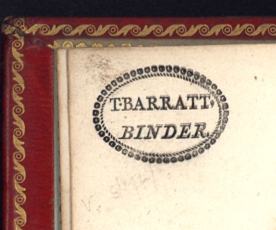




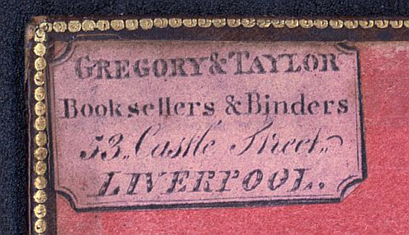














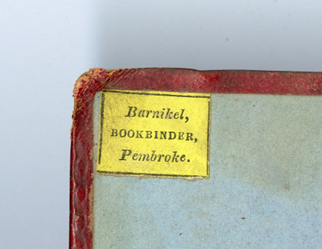





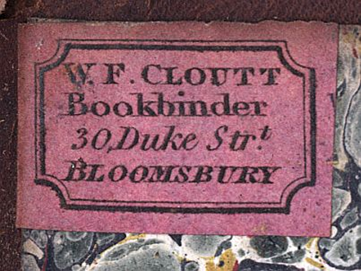



























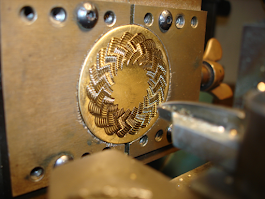















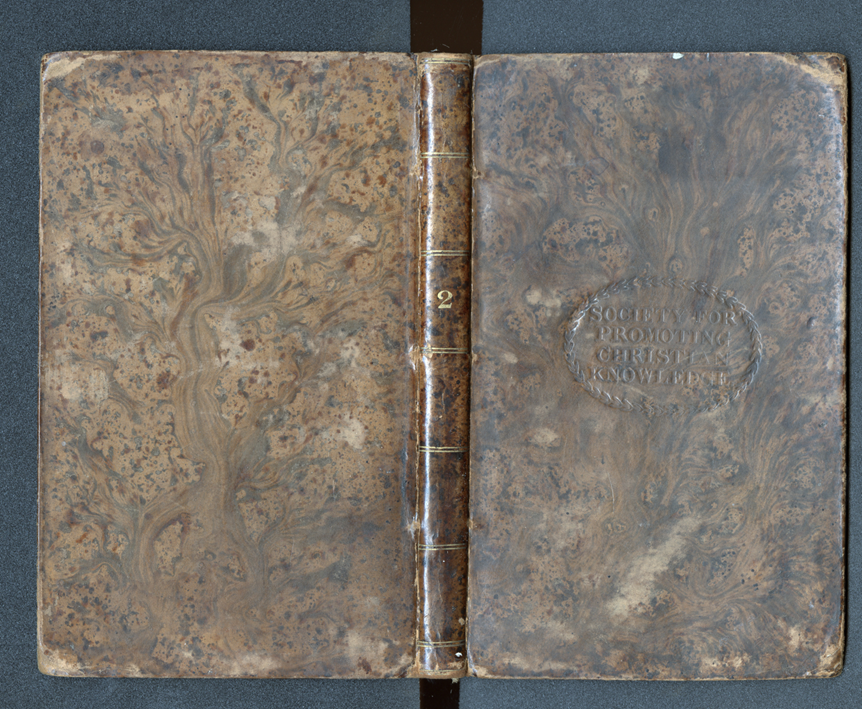


















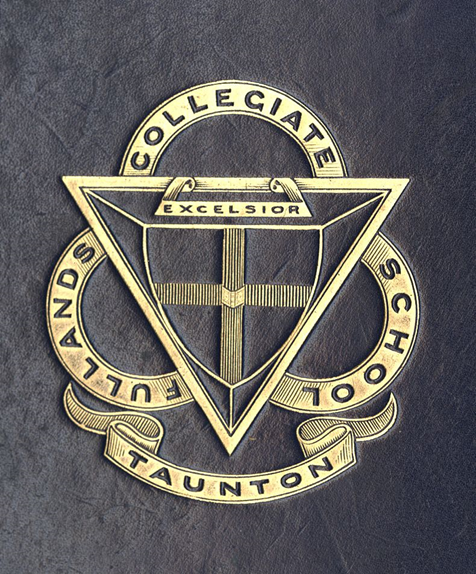






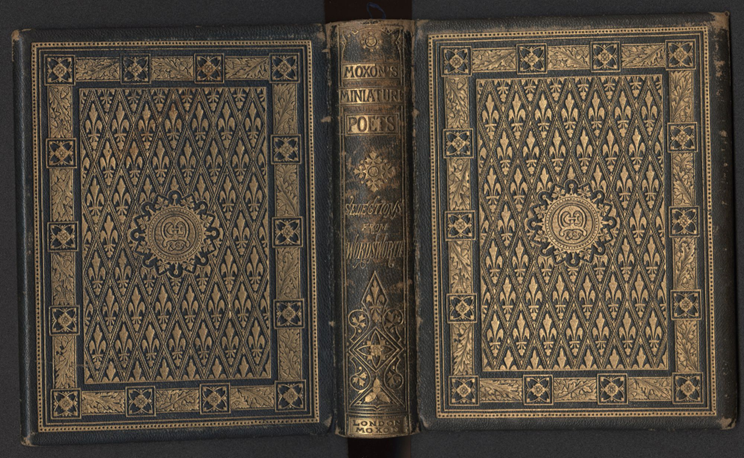














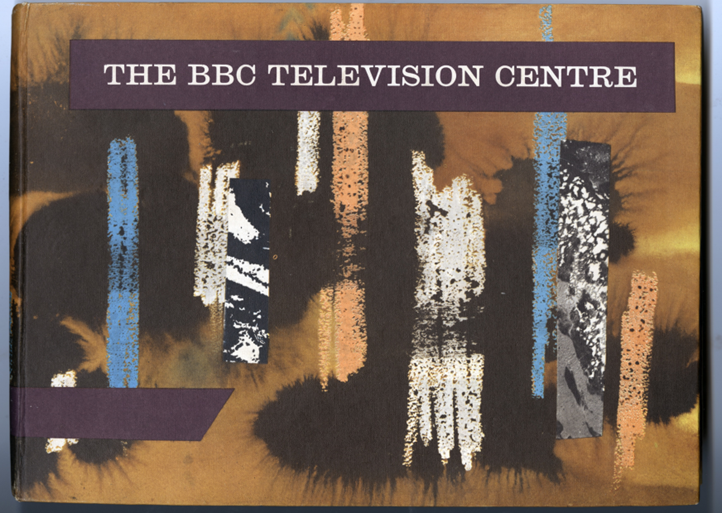




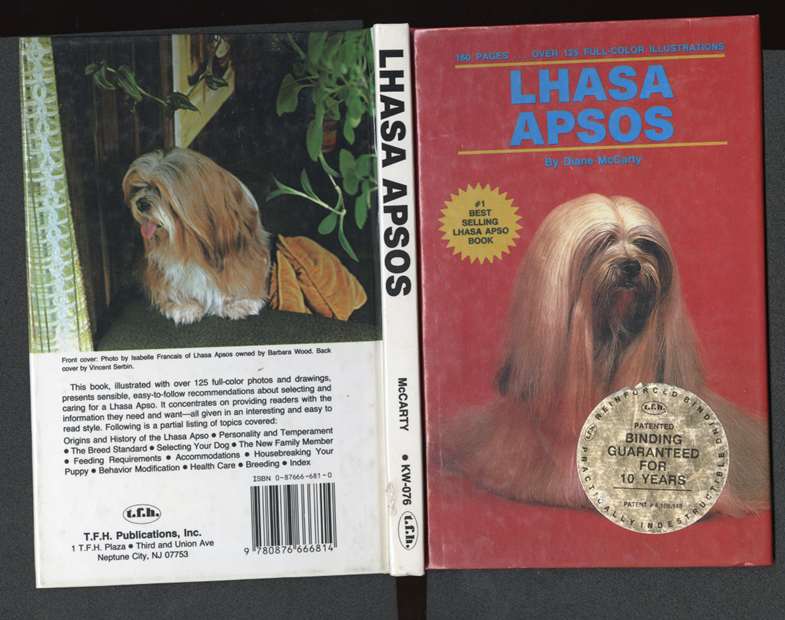

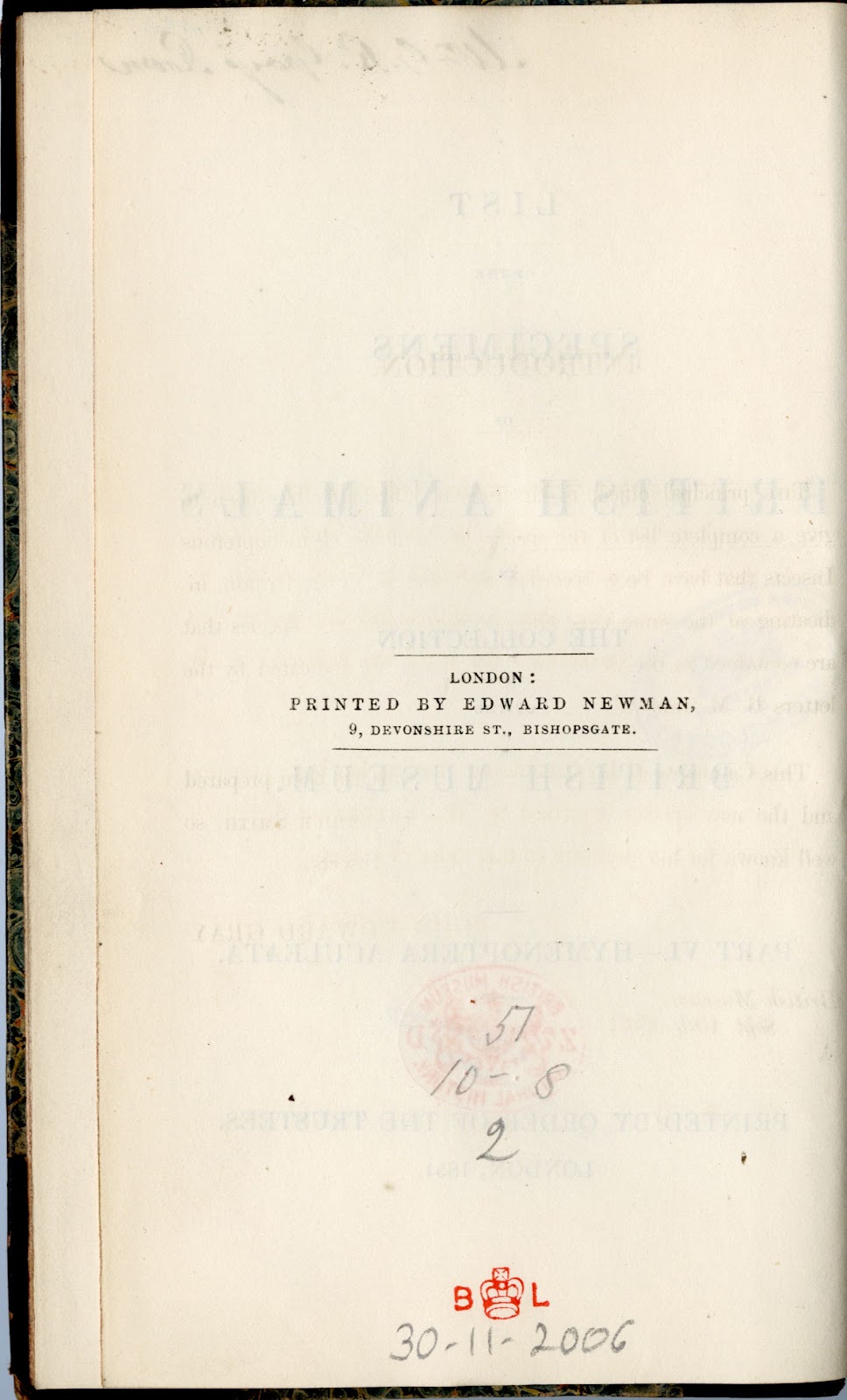








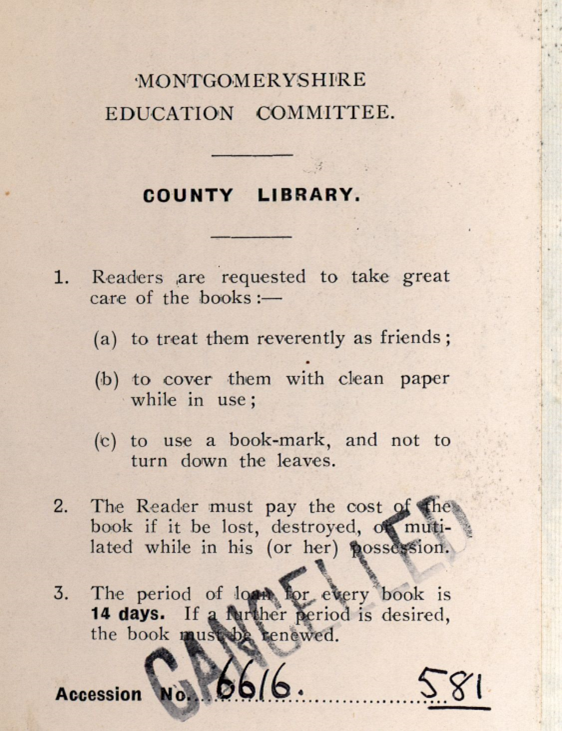






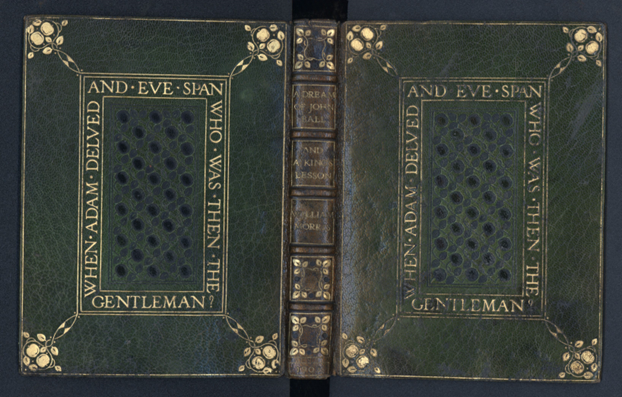


No comments:
Post a Comment